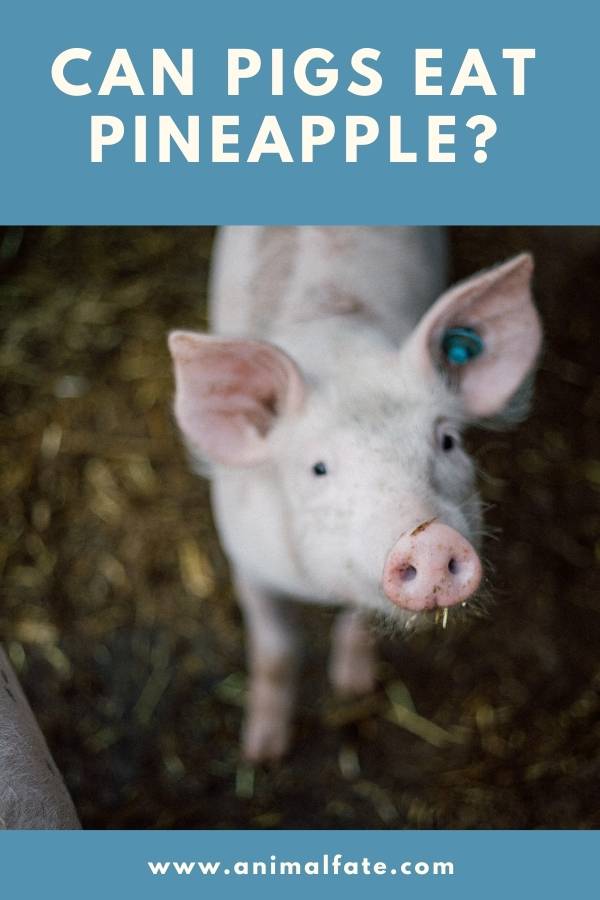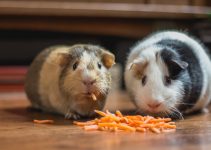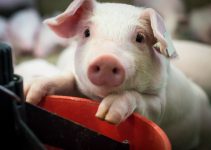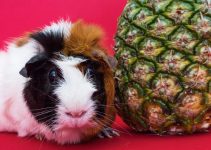Pigs can eat pineapples, yes. Pineapples are fruits with a high nutritional value and so they are a good addition to your pig’s diet. You can feed pineapples to pigs also as a treat because pineapples are sweet and pigs like them in general. But for the same reason, don’t overdo it.
Since pineapples are accessible in all markets, it’s quite a good idea to give some of it as treats to pigs. Still, the consumption of pineapples may have various effects.
Let’s see how it affects different types of pigs.
Contents
Do pigs eat pineapple?
Yes, pigs do eat pineapple. Such fruit does not only offer a delightful snack. Moreover, it contains vital nutrients that aid a pig’s overall health.
Like all other fruit, what makes hogs favor pineapple is its soft and juicy flesh.
These animals prefer food that is juicy and easy to chew. It’s the reason why a lot of hog raisers mix feeds with water. Wet food increases their appetite since it’s easy for them to eat.
Pineapples can be offered to these animals whole, even with the peel still attached.
Adult pigs can chew on small pineapples whole, while little ones may chew on smaller pieces.
When it comes to the nutritional benefits, pineapple contains:
- Antioxidants (which helps suppress bacteria and provides other health benefits)
- Digestive Enzymes (which helps in maintaining proper digestion)
- Immunity Boosters (which helps in protecting the body by strengthening immunity against diseases)
Despite the health benefit, this fruit also has a lot of sugar, which can be bad for these animals if taken in large amounts.
Thus, it’s best to keep it only as a treat and serve it in moderation.
Related – Can pigs eat strawberries?
Can mini pigs eat pineapple?
Mini pigs would also enjoy the same benefits I said earlier.
Like adult and large hogs, mini pigs would also reap nutrition by eating pineapple.
However, these little ones should only consume pineapple in a much smaller serving.
With smaller bodies, eating the same amount of pineapple similar to the larger ones may be bad for them.
Always keep in mind their size and make it the measure as to how much pineapple they can eat.
If they are still young, don’t give them more than a couple of bite-size pieces.
If it’s a piglet and it still hasn’t weaned, don’t give it any solid food. Only give it some pineapples if it’s already eating food other than its mother’s milk.
Related – Can pigs eat watermelon?
Can potbelly pigs eat pineapple?
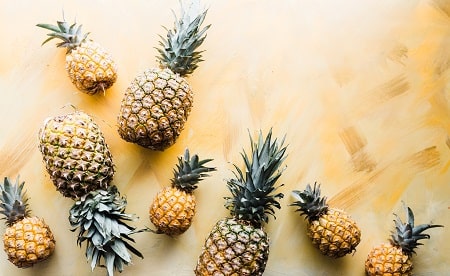
Potbelly pigs may not be the ones raised for their meat. Still, they will need nutrients from pineapples as part of their balanced diet.
Thus, if you own a potbelly pig, pineapples can be the first fruits in your options to serve as a treat.
Like the other types, potbelly pigs would undoubtedly love a pineapple snack.
With the same reminder, though. Keep the pineapple snack in moderation. Since it contains too much sugar, going overboard can take a toll on these animals.
Can pigs eat pineapple core?
Yes, pigs can eat the pineapple core, and that’s a good thing about them.
For us, we discard the pineapple’s core because we can’t eat it. Thus, if you have some pineapple core as a leftover, you can feed it to these animals.
For adult pigs, the core is part of that juicy treat. Thus, they would eat pineapple as a whole.
Aside from the core, they can also chew and digest the skin. For this reason, you don’t need to peel off the skin if you’re going to offer the whole pineapple.
For the large adult hogs, you can give it as a whole, and they are going to munch on it in a couple of bites.
However, you may want to peel the skin for the younger and smaller ones and remove the core since it may still be too hard.
What fruits can pigs eat?
There are many more fruits you can offer as an alternative to pineapples. Each fruit has its benefit, so it would be best to provide various fruits and not stick to a single one.
Here’s a list of fruits pigs can eat:
- Watermelons (helps keep them hydrated)
- Grapes (works great as an antioxidant)
- Pears (good source of fiber for digestion)
- Apples (also an antioxidant, avoid its seeds)
- Oranges (a good source of vitamin C to maintain immunity)
Here are some other fruits your pig will surely love:
- Grapefruit
- Strawberries
- Bananas
- Tomatoes
- Pitted cherries and peaches
- Berries
- Apricots
- Melons
Since pigs aren’t picky eaters, you can feed it whatever fruit is available in the market.
If you want a cheaper option, look for fruit suppliers and ask them for rejected fruits.
These fruits may not be fit for sale, but it’s safe for hogs. You may even get it for free if you’re lucky.
Lastly, when you’re feeding fruits to these animals, you should avoid the following:
Apple seeds
Such seeds contain Amygdalin, which can form cyanide. Although it’s not that risky, you should still avoid such.
Wild mushrooms
Pigs may be capable of handling toxins, but wild mushrooms can go out of hand. Avoid letting these animals access such wild mushrooms.
Tomato leaves and vines
Tomatoes are safe for pigs, but the stems and its leaves are not. The green ones in a tomato plant contain toxic things for many animals, including pigs.
What should you not feed pigs?
Pigs may not be picky eaters, but it doesn’t mean every food is safe for them. If you’re raising such animals, be wary of the following food.
Here’s a list of food that you shouldn’t feed your these animals:
- Moldy, slimy, and rotten food
- Raw meat and eggs
- High salt and sugar content
Other particular foods you should avoid are:
- Pet foods
- Fava Beans
- Flax
- Avocado
- Oak Leaves
- Nutmeg
- Food with artificial sweeteners
Summary
Pineapples provide us a good treat with a full-load of nutrients for pigs. These animals would gain a lot just by occasional pineapple treats.
Still, like any other fruits, pineapples contain too much sugar, which is unnecessary. If taken in large amounts, it can even be harmful. Thus, pineapple treats should only be moderate and not a regular part of their diet.
Resources
Image credits – Photos by Adrian Infernus and Brooke Lark on Unsplash
